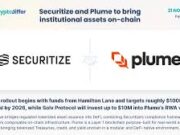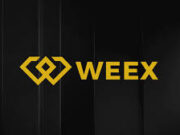Posted on June 8, 2025
Crypto airdrops have long been a tantalizing opportunity for users to score free tokens, build portfolios, and engage with emerging Web3 projects. However, the shine is fading. Recent backlash, particularly around Binance Alpha’s prioritization of its users over early adopters, has sparked heated debates on X, with hashtags like #StopBinanceAlpha trending and users like
@Avinashgunna1 decrying unfair allocations. Combined with broader issues like bot exploitation, insider favoritism, and declining trust—highlighted by Binance’s own March 2025 report—many are questioning: should you still trust airdrops? Let’s dive into the controversy, explore the data, and weigh whether airdrops remain a worthwhile pursuit in 2025.
The Allure and Erosion of Airdrop Trust
Airdrops, designed to bootstrap project adoption and reward communities, have distributed over $26.6 billion in value across the top 50 campaigns, per Gate.io. Success stories like Uniswap’s $6.4 billion airdrop in 2020 set a high bar, but 2025 paints a different picture. Binance’s report reveals a trust crisis fueled by:
- Insider Manipulation: Projects like Kaito allocated 43.3% of tokens to insiders, leaving just 10% for communities, prompting influencers to dump holdings and erode confidence.
- Bot Exploitation: Sybil farming, where bots amass tokens, plagues campaigns. LayerZero’s on-chain monitoring mitigated this, but many projects still struggle.
- Last-Minute Changes: Redstone’s slashing of community allocations from 9.5% to 5% earned a 2/10 rating from Binance, signaling poor planning and broken promises.
- Technical Failures: Magic Eden’s botched claim process in December 2024 frustrated users, further denting credibility.
These flaws have shifted sentiment from excitement to skepticism, with posts on X like
@Ty_On_Chain’s lamenting, “Binance Alpha users get more drops, leaving the real community looking stupid”.
Binance Alpha’s Role: Privilege or Problem?
Launched in December 2024, Binance Alpha is a platform within Binance Wallet that spotlights early-stage projects, offering airdrops and Token Generation Events (TGEs) to users who earn Alpha Points through trading and holding assets. Its appeal is undeniable:
- High Returns: Users have earned $13–$160 per airdrop, with NXPC yielding up to $700 for some, per PANews.
- Accessibility: No external wallets or complex DeFi steps are needed; everything happens within Binance’s trusted ecosystem.
- Volume Surge: Alpha’s trading volume hit $2.8 billion by May 2025, driven by airdrop hunters, per BeInCrypto.
However, prioritizing Alpha users has sparked accusations of unfairness:
- Community Neglect: Early adopters who engage with testnets or community tasks often receive smaller allocations than Alpha traders. For example, @Avinashgunna1 got just 130 $EDGEN tokens compared to 1,111 for Alpha users who “never heard of the project”.
- Point Farming: Studios exploit Alpha’s point system with AI-driven KYC bypasses, creating multiple accounts to dominate rewards, per @tan_decka. This inflates thresholds, with recent airdrops like ASRR requiring 207 points, up from 45 for earlier campaigns.
- Token Dumping: Alpha’s large allocations to traders lead to immediate sell-offs, crashing prices. LayerEdge ($EDGEN) and others saw dumps before community claims, per @mr_cbillionaire.
- Liquidity Tricks: Some projects, like those criticized by @0xAsta, limit liquidity to Binance Smart Chain (BSC), forcing non-Alpha users to trade on CEXs, benefiting Binance’s ecosystem.
Critics like
@Jono38003 argue Binance prioritizes profits over Web3’s ethos, “reaping huge profits without thinking about what Web3 really is”. Projects deduct community token shares to fund Alpha airdrops, stifling grassroots growth, per PANews.
Should You Still Trust Airdrops?
The disappointment is real, but airdrops aren’t dead. Here’s how to approach them in 2025:
Reasons to Stay Engaged
- Lucrative Potential: Despite flaws, airdrops like Pudgy Penguins (10/10 rating) and Hyperliquid (9/10) show fair distributions can yield significant rewards. Binance Alpha users have averaged $270 per airdrop, with peaks at $656, per airdrops.io.
- Low Entry Barrier: Small trades ($10–$50) on Alpha can qualify you for rewards, making it accessible for newcomers.
- Improving Standards: Binance’s push for transparency, fixed point-to-token ratios, and anti-Sybil tools like LayerZero’s could restore fairness. The GENIUS Act’s stablecoin regulations may also indirectly raise industry accountability.
Reasons to Be Cautious
- Unfair Allocations: Alpha’s prioritization leaves early adopters shortchanged, as seen with $ASRR’s 2/5 community share going to Alpha users.
- Scam Risks: With $9.9 billion in 2024 fraud losses, per Chainalysis, fake airdrops remain a threat. Always verify via official channels like @binance.
- Time and Cost: Point farming on Alpha incurs fees and slippage, with some users losing more than they gain, per @ZKSgu. Traditional airdrop hunting requires high time and financial costs for uncertain rewards.
- Post-Airdrop Dumps: Projects like Doodles saw 40% market cap drops post-airdrop, per Cointelegraph, highlighting volatility risks.
Strategies for Success
- Use Binance Alpha Strategically: Focus on BSC trades for double points and low fees. Maintain $100–$1,000 in eligible assets for consistent Balance Points. Monitor thresholds via the Binance app’s Alpha section.
- Vet Projects: Prioritize campaigns with clear eligibility rules and community focus, like Pudgy Penguins. Avoid those with heavy insider allocations, like Kaito.
- Engage Early: Interact with testnets or protocols like zkSync or Initia, which reward early adopters, per Gate.io. Balance Alpha participation with community tasks.
- Stay Safe: Use non-custodial wallets with 2FA and verify links via official X accounts or https://www.binance.com. Check regional tax implications, as airdrops may be taxable.
- Track Sentiment: Follow X discussions (@cryptoquant_com, @Cointelegraph) and Coinglass for real-time insights on airdrop fairness and market dynamics.
The Bigger Picture
The frustration with Binance Alpha reflects a broader tension in Web3: centralized platforms versus decentralized communities. While Alpha’s $2.8 billion volume and 140+ listed projects showcase its dominance, its profit-driven model risks alienating the grassroots ethos, as
@nghianeo pleads for “fairness for early birds”. Yet, airdrops remain a powerful tool for wealth democratization when done right, contributing $20 billion to 2024’s market cap, per CoinGecko.
Final Thoughts
Should you trust airdrops in 2025? Yes, but with eyes wide open. Binance Alpha offers lucrative, low-effort rewards but prioritizes its ecosystem, often at the expense of early adopters. The broader airdrop landscape, marred by bots, insiders, and broken promises, demands caution. By vetting projects, balancing Alpha and community engagement, and staying scam-savvy, you can still capitalize on airdrops’ potential. As
@mangunzalo tweeted, “It’s frustrating really,” but with strategic moves, you can turn disappointment into opportunity.
What’s your experience with airdrops? Are you diving into Binance Alpha or sticking to testnets? Share your thoughts below!
Disclaimer: This blog post is for informational purposes only and does not constitute financial or investment advice. Cryptocurrency airdrops carry significant risks, including scams and volatility. Always conduct your own research and verify sources before participating.
Sources:
- Gate.io: Current State of Airdrops in 2024
- PANews: Binance Alpha’s Returns Crush Airdrop Track
- BeInCrypto: Binance Research Reveals Flaws in Airdrops
- airdrops.io: Binance Alpha Airdrops Guide
- CoinGecko: Top 10 Upcoming Airdrops in 2025
- crypto.news: #StopBinanceAlpha Backlash
- X Posts: @Avinashgunna1, @nghianeo, @mr_cbillionaire, @0xAsta, @tan_decka, @mangunzalo, @Ty_On_Chain



























